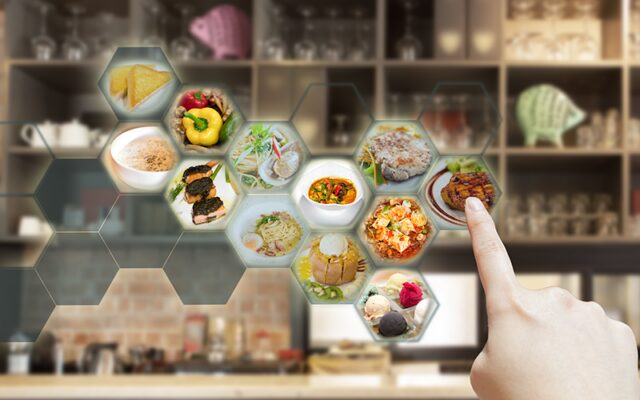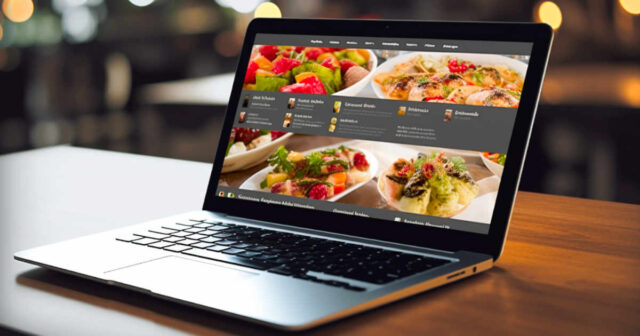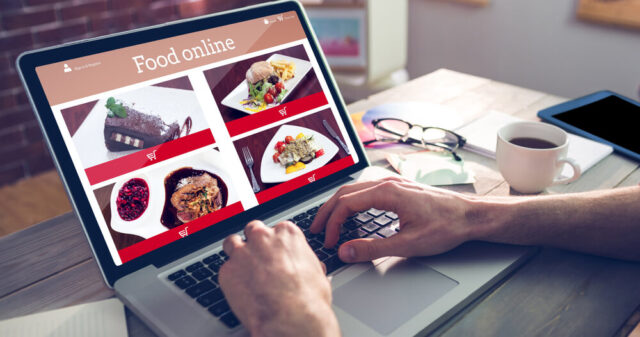
Catering software is a type of software designed to help catering businesses manage various aspects of their operations, from menu planning and event management to inventory tracking and payment processing.
The catering software has become increasingly important in the catering industry, as businesses strive to improve their efficiency and customer experience while minimizing costs.
In this blog post, we will provide an overview of the current state of catering software, including its definition and importance in the catering industry.
We will also discuss some of the key features and benefits of catering software and explore the emerging trends that are shaping the future of the industry.
Emerging Trends in Catering Software

The catering industry is constantly evolving, and advanced catering software is no exception. There are several emerging trends that are shaping the future of catering software, including:
Artificial Intelligence (AI) and Machine Learning (ML)Catering software can be enhanced with AI and ML capabilities, which can help businesses automate routine tasks, analyze data more effectively, and make smarter decisions.
Mobile Compatibility
With the increasing use of mobile devices, catering software that is compatible with mobile devices can offer businesses greater flexibility and accessibility.
Cloud Computing and Remote Access
Cloud-based catering software can be accessed from anywhere with an internet connection, allowing businesses to manage their operations remotely.
Internet of Things (IoT) Integration
IoT devices, such as smart sensors and cameras, can be integrated with catering software to provide real-time data on inventory levels, equipment performance, and other key metrics.
Impact of Emerging Trends on Catering

These emerging trends have the potential to greatly impact the catering industry. Some of the potential benefits of these trends include:
Improved Efficiency and Cost Savings
AI and ML capabilities, as well as cloud computing and remote access, can help catering businesses save time and money by automating tasks, reducing errors, and improving workflows.
Enhanced Customer Experience
Mobile compatibility and IoT integration can help catering businesses offer more personalized and convenient services to their customers.
Improved Data Analytics and Decision Making
AI and ML capabilities, as well as IoT integration, can provide catering businesses with more accurate and real-time data on key metrics, allowing them to make more informed decisions.
Challenges and Opportunities

As with any emerging technology, catering software also comes with its own set of challenges and opportunities.
Here are a few key ones to consider:
Security and Data Privacy Concerns
With the increasing amount of data being collected and stored in catering software systems, there is a growing concern about the security and privacy of that data.
Catering businesses need to ensure that their software providers have robust security measures in place to protect against data breaches and unauthorized access.
Integration with Existing Systems
As catering software becomes more sophisticated, it becomes increasingly important for it to integrate seamlessly with other systems used by catering businesses, such as point-of-sale systems and accounting software.
This can be a challenge if the software is not designed to work with other systems, or if the business has legacy systems that are difficult to integrate.
Skilled Workforce and Training Needs
The adoption of catering software requires a skilled workforce that is trained to use the software effectively. This can be a challenge for catering businesses, especially those that may not have the resources to invest in training and development programs for their employees.
New Business Models and Revenue Streams
Catering software also presents new opportunities for businesses to develop innovative business models and revenue streams. For example, the ability to offer online ordering and delivery services can open up new markets and revenue streams for catering businesses.
Overall, while there are certainly challenges associated with the adoption of catering software, the opportunities presented by this technology far outweigh the risks.
By staying up-to-date with the latest trends and investing in the right software solutions, catering businesses can stay competitive and continue to grow and thrive in a rapidly evolving industry.
Future Outlook

As catering software continues to evolve, there are several predictions for the future of the industry.
These include the increased use of virtual and augmented reality for event planning, the incorporation of blockchain technology for secure and transparent transactions, and the growth of predictive analytics for inventory management and cost control.
New technologies and innovations will continue to emerge, providing new opportunities for catering businesses to streamline their operations and enhance the customer experience. For example, voice-activated technology could be used to place orders and manage menus, and drones could be used for food delivery.
The potential impact on the catering industry is significant. The use of advanced technology can help catering businesses to stay competitive and meet the changing needs of their customers. It can also help to reduce costs, improve efficiency, and increase revenue.
Overall, the future of catering software looks bright, with many exciting developments on the horizon. As technology continues to evolve, catering businesses will have the opportunity to embrace new innovations and stay ahead of the competition.
Conclusion
The catering industry is constantly evolving, and catering software is becoming increasingly important to manage catering businesses. Emerging trends in catering software, such as
Artificial Intelligence (AI), mobile compatibility, cloud computing, and IoT integration, will have a significant impact on the industry, improving efficiency, customer experience, and data analytics.
However, with these trends come challenges such as security and data privacy concerns, integration with existing systems, skilled workforce, and training needs, and new business models and revenue streams. To prepare for the future, catering businesses need to embrace these trends and overcome these challenges.
Catering businesses must carefully evaluate their needs and choose the right catering software that fits their business model. The right software can help businesses improve their efficiency, manage inventory and supplies, streamline event planning, and enhance customer experience.
By staying up-to-date with emerging trends and investing in the right catering software, businesses can ensure they are prepared for the future of the catering industry.












